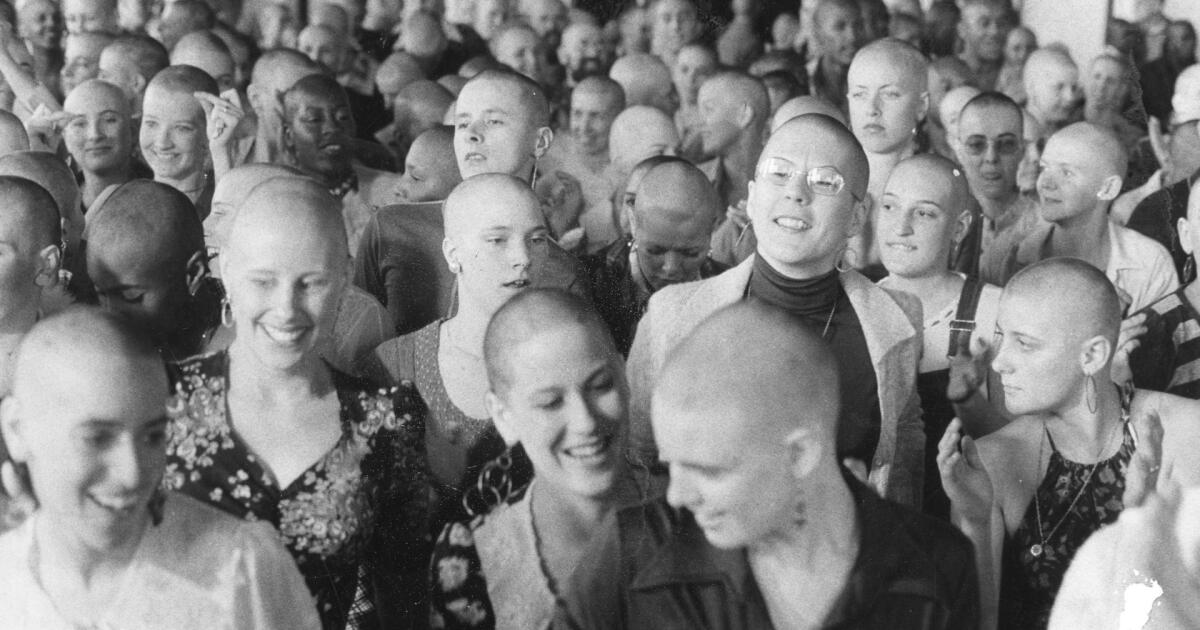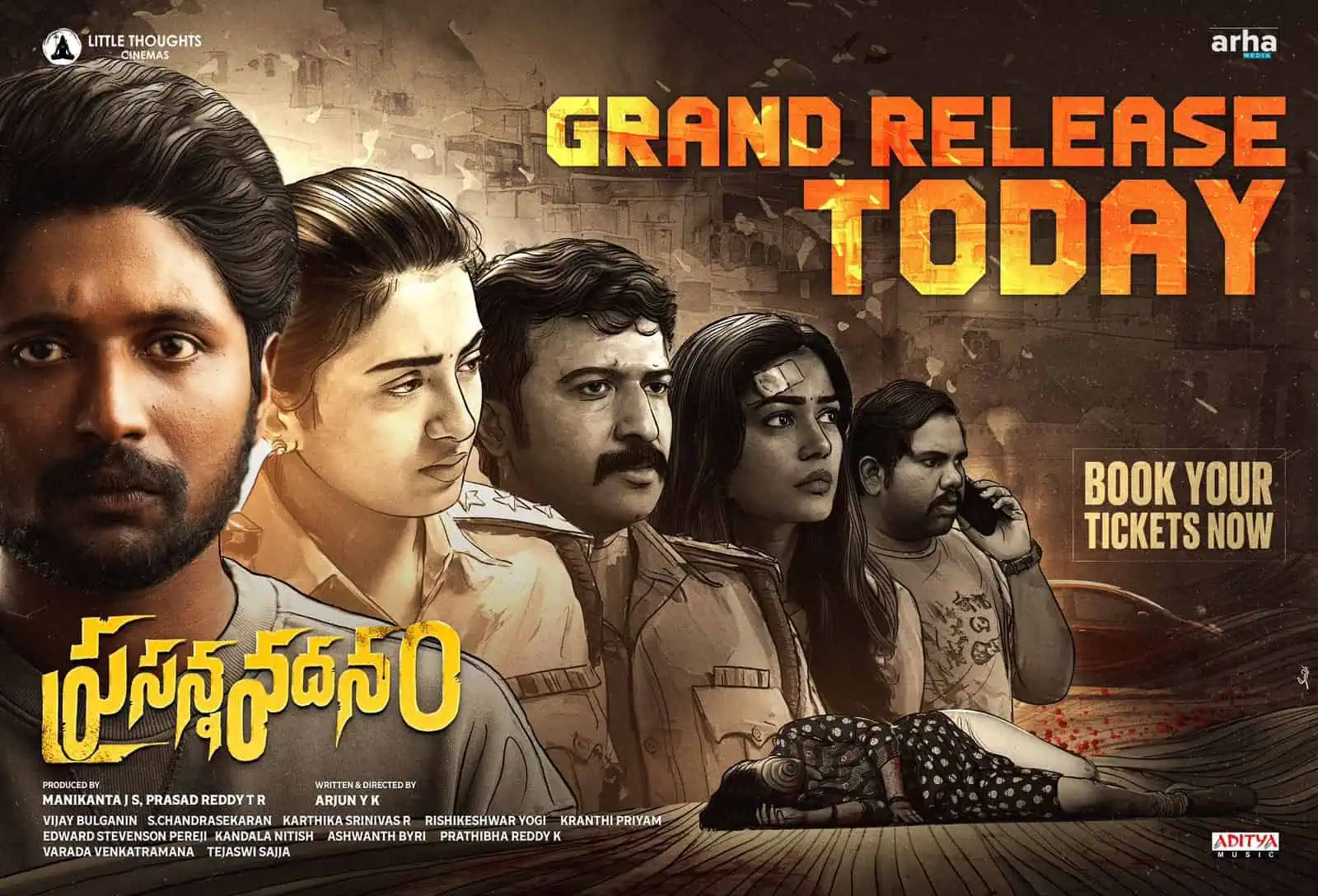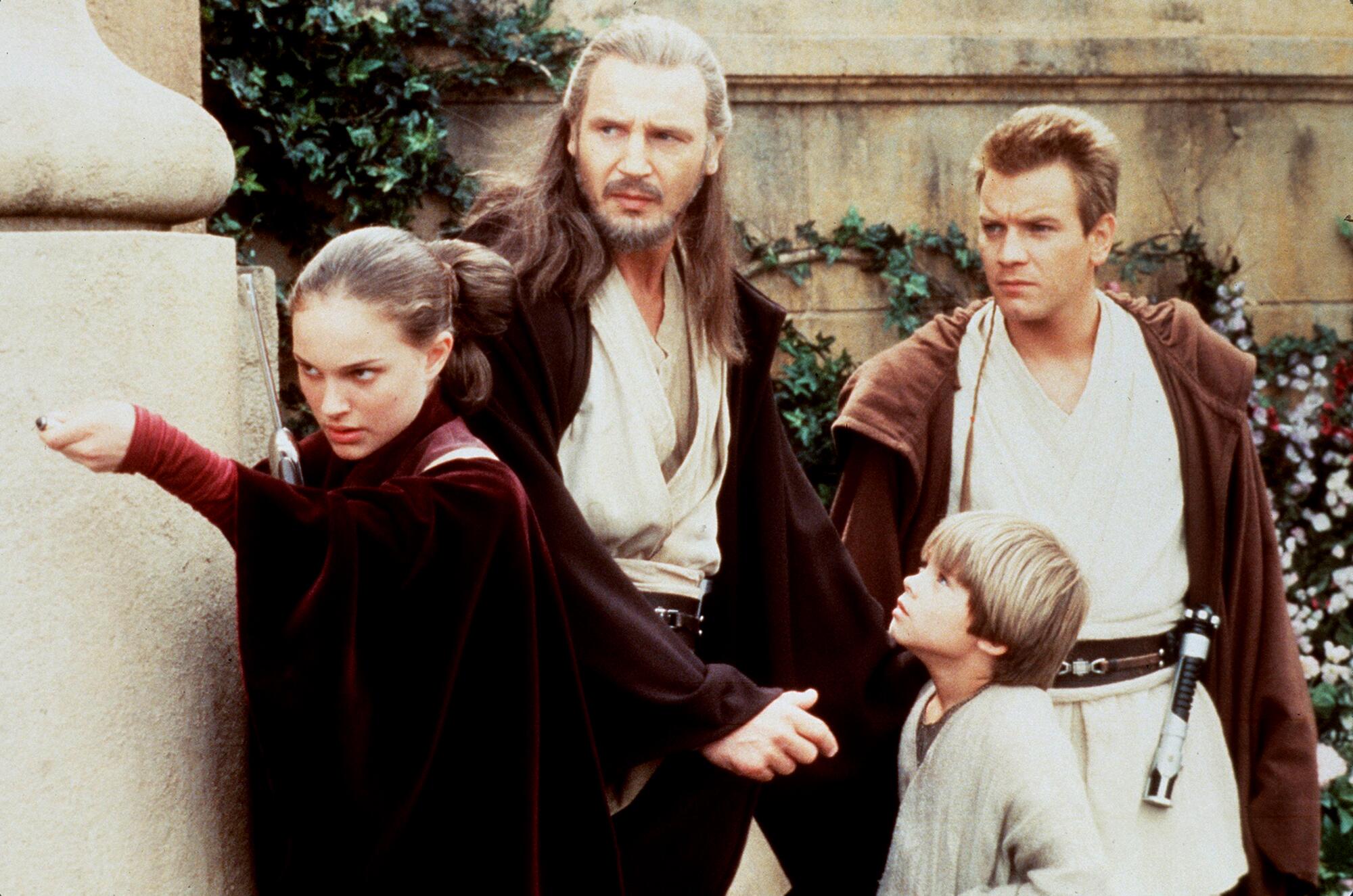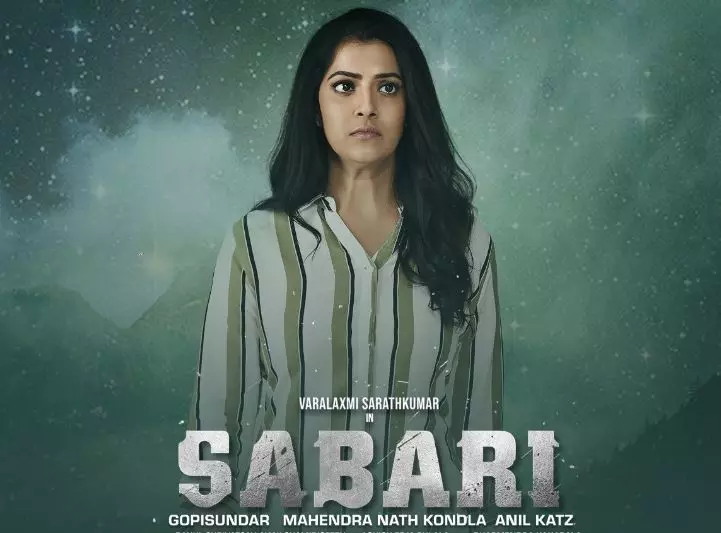Entertainment
'The Synanon Fix' shows how the California dream went awry for a rehab group turned cult

In the late 1950s, Charles “Chuck” Dederich started a drug rehabilitation program out of a storefront in Santa Monica. A recovering alcoholic who’d gotten sober through Alcoholics Anonymous, Dederich offered free treatment to self-described “dope fiends” desperate to kick their deadly habit and go cold turkey.
Over the next decade and a half, the group, named Synanon, expanded across the country and evolved into a self-help movement with thousands of members, including many who were not addicts but were simply drawn to its idealistic vision — no drugs, alcohol, or violence — and its primary ritual, an intensely confrontational form of group therapy known as “The Game.”
Yet by the late 1970s, Synanon had strayed dramatically from its original mission, devolving into a dangerous quasi-religious paramilitary organization whose devotees, beholden to Dederich’s increasingly erratic whims, were willing to undergo forced vasectomies, relinquish control over their own children and even attempt to murder a prominent critic by planting a rattlesnake in his mailbox.
The dark saga of Synanon is now the subject of a four-part documentary “The Synanon Fix,” concluding Monday on HBO. Directed and executive produced by Rory Kennedy, the series traces the group’s utopian origins and gradual descent into violence and manipulation. Arriving at a moment when the public’s interest in cults and high-control groups seems almost insatiable, “The Synanon Fix” offers a particularly grim, resonant twist on the familiar tale of the California dream gone awry.
The story “had this really dramatic, almost Shakespearean arc to it,” said writer and executive producer Mark Bailey, in a video chat with Kennedy from their home in California (the couple are filmmaking partners and have also been married since 1999). “The intentions and accomplishments for the first decade or so were really amazing. But where it ended up was really dark and destructive.”
Kennedy, who has made more than a dozen documentaries including “Ghosts of Abu Ghraib” and “Downfall: The Case Against Boeing,” said she was not particularly interested in “quote-unquote cult stories,” but was struck by the drama of Synanon’s 180-degree transformation. “In the beginning the pillars of Synanon were no drugs, no alcohol and no violence. By the end, they had bought more firearms than anybody in the history of California and had an open bar in the facility.”
Not only was the story dramatic, but it contained lessons about the dangers of blindly following a charismatic leader — a topic that feels politically relevant in 2024. Dederich was just such a figure, someone who built a community and inspired intense loyalty from his followers. “Because they’re tethered to him, where he goes, they go. And that’s the danger — as he starts becoming less stable, whether it’s from his alcoholism or mental illness, he takes Synanon with it,” Bailey said. “That felt, to us, like an important thing to say right now.” (Along with many members of her famous family, Kennedy, whose brother Robert F. Kennedy Jr. is running for president as an independent, endorsed President Biden last week.)
Kennedy and Bailey first learned about Synanon about a decade ago while reading “Straight Life,” an autobiography by jazz musician Art Pepper and his wife, Laurie, who met while getting clean in Synanon. “I had never heard of Synanon, but it’s right there on the beach, these folks with shaved heads, playing ‘The Game,’ which sounds like this pretty radical therapeutic treatment,” Bailey said. “I was instantly like, ‘Wow, what was this? And why have I never heard about it?’”
Charles “Chuck” Dederich, founder of Synanon.
(HBO)
The documentary is woven together using extensive archival material — including news reports and visceral footage of members playing “The Game,” in which participants were aggressively pushed to be brutally honest about themselves and each other. It also features audio recordings of Dederich lecturing his followers over “the Wire,” the group’s internal broadcasting system, as well as first-person accounts from roughly 20 former members and interviews with journalists including Narda Zacchino, who wrote about Synanon for The Times.
Some former members were initially wary of sitting for interviews, Kennedy said, because “everybody was aware that there was a way to tell this story that’s pretty sensationalist.” But as she gradually won them over, more people decided to participate in the documentary — including Dederich’s daughter, Jady Dederich Montgomery.
After years of wrangling, the filmmakers were also able to secure access to Synanon’s archives, which included thousands of photos and “a treasure trove of extraordinary footage,” according to Kennedy. Because this happened just weeks before they were set to lock picture, they had to ask HBO for several more months and more money to recut the documentary. “To their credit, they agreed,” said Kennedy.
Interviewing people who spent years in Synanon playing “The Game” was both fascinating and challenging, she said.
“On average for documentaries, which I’ve now been doing for 25 years, the interviews are maybe two to three hours long. None of these were less than seven hours. Some of them went for nine hours, in like a sitting.” At times, Kennedy felt she was playing “The Game” with her subjects. “They would talk back to me more about how they were feeling about the interview as the interview was happening.”
Kennedy takes a straightforward approach in “The Synanon Fix,” allowing the story to unfold chronologically and spending time explaining the group’s origins before diving into the rattlesnakes and mate-swapping.
“This was a community that was taking a big swing at something that was really ahead of its time, in many ways, in terms of how it was treating drug addicts, who had been a very ostracized community,” said Kennedy. “They either went to jail, or they went to a mental hospital, or they died.”
Viewers learn how Synanon, which eventually moved into the historic Hotel Casa Del Mar in Santa Monica, began to attract a wider array of followers with the rise of the counterculture in the late 1960s. “Lifestylers,” as they were known, were people who joined Synanon because they were seeking a sense of purpose and belonging, not to treat their addiction. They saw the group as “a cure for loneliness and alienation,” said Bailey, and “The Game” as a way to heighten connection and sense of community. Some also donated large sums of money and professional services to the organization.
Throughout the ‘70s Dederich became increasingly dictatorial, making bizarre demands of his followers that had little to do with the group’s original mission. He required members to shave their heads and follow stringent diets and exercise regimens. Men were pressured into getting vasectomies and women into having abortions. After his wife died and he remarried, Dederich urged married couples to divorce and take new partners assigned to them. Eventually, Dederich fell off the wagon and rolled back the group’s ban on alcohol. Children were separated from their parents and had to shave their heads and play “The Game” just like adults, even if they lacked the ability to understand it. Some children allegedly were beaten and forced to do grueling labor.
Throughout the decade, Synanon faced mounting criticism including charges of kidnapping and child abuse, but its members grew ever more militant, stockpiling weapons and forming a militia called the Imperial Marines. The group made national headlines in 1978 when a lawyer named Paul Morantz, who had won a $300,000 settlement from Synanon, nearly died from a rattlesnake bite after Synanon zealots planted the animal in his mailbox.
The incident marked a breaking point for some adherents, but not all.
One of the more striking aspects of the series is how many former members still seem to believe in the Synanon cause — and remain grateful to Dederich, who died more than 25 years ago, for saving their lives.

Rory Kennedy, one of the filmmakers of HBO’s “The Synanon Fix.”
(Jon Kopaloff / Getty for HBO)
The series’ central question is “Did the cure become a cult?,” and the filmmakers don’t entirely agree on the answer.
Bailey is not fully convinced Synanon fits the definition of a cult, if only because “there is something that feels too random and disorganized in what it was trying to do,” he said.
Kennedy is more confident in using the term. “I talked to enough people who felt like they compromised their moral compass to follow an idea that drove them in directions that they didn’t feel they should have gone in. That’s a defining quality of a cult,” she said, gently needling her husband for his more ambivalent take. “If you were there, you would have stuck with it to the end, clearly,” she said, laughing. “Sucker is what you are.”
Regardless of how they classify the group, the filmmakers see “The Synanon Fix” as a quintessentially Californian story about the kinds of spiritual seekers who’ve been drawn to the state for generations.
“You think of the people who move West as already kind of having searching in their DNA,” said Bailey. “We came out here about 14 years ago, but both of us were born and raised on the East Coast. And it was really something to get used to how you are allowed to just follow your own weird jam and everybody’s like, ‘Oh, that’s great.’”

Movie Reviews
Prasanna Vadanam Movie Review – Gulte

2.75/5
2 Hr 26 Mins | Thriller | 03-05-2024
Cast – Suhas, Payal Radhakrishna, Rashi Singh, Viva Harsha, Nitin Prasanna and others
Director – Arjun Y K
Producer – Manikanta J S, Prasad Reddy T R
Banner – Arha Media, Little Thoughts Cinemas
Music – Vijai Bulganin
Suhas has become one of the bankable actors in Tollywood. He is now out with his latest film, Prasanna Vadanam, based on a man with face blindness. Directed by Arjun YK, let’s review the film here.
Plot
Surya(Suhas), a Radio RJ meets with a terrible accident and ends up with a rare disease named Prosopagnosia. Due to this, he gets face blindness and cannot identify the faces of people around him. One fine day, he witnesses the brutal murder of a young girl. He informs the cops but instead gets embroiled in the case. Left with no choice; he approaches top cop Vaidehi(Rashi Singh) for assistance. But things turn on its head and multiple cases are now filed on Surya. The rest of the story is about how Surya proves his innocence with the help of his girlfriend Adhya(Payal Radhakrishna).
Performances
Suhas is known for his versatile characters gets a tailor-made role in Prasanna Vadanam. As he has a unique disease, the scope for him to perform uniquely is high in the film, and Suhas lives up to all the expectations. His performance in the second half is highly impressive and arrests you till the end. Nithin Prasanna, who was last seen in Ambajipeta Marriage Band, delivers yet another bankable performance. The various shades he showcased in his performance were impressive. Rashi Singh, who played the top cop, was decent, but she should have worked more on the expressions in the latter part of the film. Viva Harsha was okay, and so was Payal Radhakrishna.
Technicalities
Vijay Bulganin composed the music for the film, and his songs are quite ordinary. None of the songs register with the audience, but the background score is quite impressive. The sound design neatly elevates the proceedings and is composed in a stylish manner. The camera work is so-so and one cannot complain keeping the budget in mind. The production values are also okay, and there is nothing much to rave about. The editing is perfect as the narrative is crisp and to the point.
Thumbs Up
Suhas
Interval twist
Thumbs Down
Lag in the second half
Songs
Flashback
Analysis
Making thrillers is one of the biggest tasks for any writer-director. But newcomer Arjun YK has chosen a story with face blindness which is something new for Telugu cinema. So, this itself makes things interesting for Prasanna Vadanam. Prasanna Vadanam starts on a very interesting note, and the best part is that director Arjun does not waste any time entering the conflict point in the film.
Once the heroine is introduced, the love track gets a bit boring, but that too passes, and things become interesting for the audience. Once the crime is committed, the concentration shifts towards the cops and how they will deal with the case. But the way director Arjun brings in the half-time twist is superb and unexpected. As the director reveals the man behind the murder, things become a bit difficult for the director to handle the proceedings.
This is when the proceedings become slow and a bit dull. Also, the reason behind the motive of the murderer is not showcased convincingly. Also, the way Suhas behaves in the second half looks a bit odd. As he has face blindness, the director could have added more drama and played with the effects, but that does not happen, and things move slowly until the pre-climax.
Director Arjun has potential and narrates the film well for the most part. However, way too many cinematic liberties and a lack of hold on emotions are some of the drawbacks. Prasanna Vadanam has decent moments that hold your attention. However, one needs to prepare for the pace and lack of depth in the proceedings as well.
Bottom Line – Passable Thriller
Rating: 2.75/5
Entertainment
'The Phantom Menace' dominated 1999's box office. History has been kinder to it

May 19, 1999, in a galaxy not so far away …
Excitement for “Star Wars” is at an all-time high. The first new film in the beloved series that originally concluded with 1983’s “Return of the Jedi” is about to be released in 2,970 theaters, with a majority starting their first screenings just after midnight. (Ticket sales opened just the week before.)
Audiences have had 16 long years to dream about what George Lucas has conjured up for this new cinematic adventure. But instead of whatever they’d imagined, “Star Wars: Episode I — The Phantom Menace” involves a nefarious trade dispute, myth-altering midi-chlorians and Jar Jar Binks.
And although it becomes, for a while, the second-highest grossing film of all time, the divisive new chapter gains a reputation as one of the worst “Star Wars” movies ever.

The 1999 Project
All year we’ll be marking the 25th anniversary of pop culture milestones that remade the world as we knew it then and created the world we live in now. Welcome to The 1999 Project, from the Los Angeles Times.
Today, “The Phantom Menace” returns to theaters in celebration of its 25th anniversary. In the 19 years since 2005‘s “Star Wars: Episode III — Revenge of the Sith,” the much maligned prequel trilogy has, in many ways, been redeemed.
Just look at how its stars — including Ewan McGregor, Hayden Christensen and Ahmed Best — have been re-embraced by fans in their returns to the franchise in television projects such as “Obi-Wan Kenobi” and “Ahsoka.” Even the actors themselves have voiced appreciation that their original films seem to be regarded more positively. Becoming “more aware of the fondness that the generation that we made the prequels for has for those films … [has] meant a lot to me,” McGregor told NBC News in 2022.
And as the “Star Wars” franchise continues to grow, with upcoming projects including two new series, “The Acolyte” and “Skeleton Crew,” the second seasons of “Andor” and “Ahsoka” and at least two additional films, it has become increasingly apparent just how much of it is built upon a foundation laid down by the prequels. “Star Wars’” most recent successes would not exist if not for “The Phantom Menace.”

“The Phantom Menace” arrived saddled with many expectations. Audiences who grew up on “Star Wars” in theaters or on VHS tapes knew how Darth Vader’s story ended.
“The Phantom Menace” was going to show how it began, something only teased in the original films. Many fans camped outside movie theaters for weeks, just to be among the first to see it. Reports at the time mention that the line outside Westwood’s Village Theatre included about two dozen regulars ages 14 to 40 equipped with couches, recliners, beach chairs, video games and even satellite TV.
“It is only a movie,” The Times reported Lucas insisting during a press event during the lead-up to release. “We have tried hard not to let the film get over-hyped. . . . [It’s] a film for 12-year-olds . . . a Saturday-afternoon serial for children.”

From left, Natalie Portman, Liam Neeson, Jake Lloyd and Ewan McGregor in the movie “Star Wars: Episode I — The Phantom Menace.”
(Keith Hamshere / Lucasfilm Ltd.)
Set roughly 30 years before the events of the original “Star Wars” (which was re-christened “A New Hope” in 1981 after a re-release), “The Phantom Menace” introduced audiences to a 9-year-old Anakin Skywalker (played by Jake Lloyd), a child who would eventually grow up to become Darth Vader.
Anakin’s story begins when a diplomatic mission gone awry brings Jedi Knight Qui-Gon Jinn (Liam Neeson), his apprentice Obi-Wan Kenobi (McGregor), the clumsy and, to some, cringeworthy Jar Jar Binks (Best) and young Queen Amidala (Natalie Portman) to his home planet, Tatooine.
Many critics were underwhelmed. In his review, Times film critic Kenneth Turan described the film as a “considerable letdown” but “certainly adequate.”
It’s “not going to change anyone’s life or method of worship,” wrote Turan. “It’s only a movie, and … a much less impressive one than all the accompanying genuflection would have you believe.” (Lucas, for his part, noted in advance of “Phantom’s” release that the original trilogy got “generally bad reviews” and that he expected the same this time around as well.)
What “The Phantom Menace” did have were state-of-the-art visual effects: Lucas was uninterested in revisiting “Star Wars” until the technology caught up to his vision. The film boasts the first fully computer-generated supporting character in Jar Jar Binks, and regardless of one’s opinion of the character, that is a landmark, paving the way for “The Lord of the Rings’” Gollum and the “Avatar” films.
“The Phantom Menace” also included such memorable sequences as Anakin’s podrace and a lightsaber showdown (referred to by the John Williams theme that accompanies it, the “Duel of the Fates”) between our Jedi heroes and the film’s fantastically designed villain, Darth Maul.

From left, Liam Neeson, Ray Park and Ewan McGregor in the climactic lightsaber duel of “Star Wars: Episode I — The Phantom Menace.”
(Keith Hamshere / Lucasfilm Ltd.)
Still, audiences were much more vocal about the ways “The Phantom Menace” was a disappointment. Criticism of the film included concerns that certain new aliens like the Neimoidians and Gungans appeared to reflect racist tropes. (Lucasfilm rejected those claims as “absurd.”) Any thoughtful responses were drowned out by more vitriolic pushback on everything from the characters and acting to the story and execution.
It was an early glimpse into the darker side of the “Star Wars” fandom — and maybe self-entitled fandom in general. Jar Jar Binks actor Best has been candid about how the negative responses to his character led to his receiving online abuse and death threats. Such bad behavior intensified 16 years later, beginning with the release of the sequel trilogy, which saw stars John Boyega and Kelly Marie Tran becoming targets of racist backlash.
And the newer shows are arriving at a time when “anti-woke” superfans who can’t imagine a “Star Wars” galaxy (one already populated with nonhumanoid aliens) as diverse and inclusive have been increasingly emboldened to make racist and sexist remarks.
Luckily, the “Star Wars” fandom is not defined by that vocal minority.

In recent years, appreciation for “The Phantom Menace” has grown. The 2022 arrival of “Obi-Wan Kenobi,” in particular, had even skeptics reassessing the significance of the prequel trilogy.
“The nostalgia for the prequels can’t redeem those movies in full … But they’re quotable, they’re memeable, and they’re fun to rant against and argue about and rally around,” wrote the Ringer’s Justin Charity.
Part of the reason “The Phantom Menace” has been increasingly embraced is because for a generation of fans, “Episode I” was their first “Star Wars” experience. They‘re now old enough to defend what was to them just as foundational as seeing “Star Wars” in a theater was for kids in 1977.
The prequel films have also been further recontextualized by additional storytelling. Series like the animated “Star Wars: The Clone Wars,” set in the years between the events of “Attack of the Clones” (2002) and “Revenge of the Sith,” have fleshed out the universe. Live-action shows like “The Mandalorian” and “The Book of Boba Fett” have drawn on lore established in the prequel-era stories — with success.
The “Obi-Wan Kenobi” series revisits McGregor’s version of the title character for a glimpse at how the man at the end of “Revenge of the Sith” became the one in “A New Hope” (portrayed by Alec Guinness). Concepts like cloning and even midi-chlorians, the micro-organisms with ties to the Force first mentioned in “The Phantom Menace,” have also endured: The only reason the Mandalorian and Grogu even cross paths is because the remnants of the Empire are so interested in the latter’s midi-chlorian count.

Jake Lloyd and Pernilla August in “Star Wars: Episode I — The Phantom Menace.”
(Lucasfilm Ltd.)
In a larger sense, even shows like “Andor” can trace their DNA to the prequels, by being unafraid to enter into what is considered canon and challenge the assumptions of what is expected of a “Star Wars” story. The franchise has increasingly become one large tapestry where new titles build upon and reframe what came before — not a collection of three classics “owned” by gatekeeping fans. And while subsequent projects do not actually change the quality of past installments, they do sometimes lead to reassessment.
“The Phantom Menace” is also a precursor — for good and ill — of today’s modern media landscape of sprawling IP and interconnected universes like the Marvel Cinematic Universe, DC Universe and even Godzilla’s Monsterverse. Lucas’ enormous box office success not only made an eventual sequel series an inevitability but it also signaled to others that there were possibilities in revisiting dormant worlds to attract new audiences.
The bar for “The Phantom Menace” was set impossibly high — not necessarily by the films of the original trilogy but the audience’s relationship with them. But “Star Wars” movies are special because of their potential to make people fall in love with storytelling just as much as the world itself.
And for a generation that grew up on the prequels, “The Phantom Menace” did just that.
Movie Reviews
Sabari Movie Review: Varalaxmi Proves She Can Do Female Centric Roles

Sabari, starring Varalaxmi Sarathkumar and directed by Anil Katz. The film hit theatres today.
What is it about?
The film follows Sanjana (Varalaxmi Sarathkumar), a single mother whose world is turned upside down when a horrifying truth comes to light: the child she raised is not her biological daughter.
Plot:
The story begins with a twisted past, revealing a villain, Mime Gopi, who escaped a mental asylum with an obsession—finding the daughter he believes was swapped. This sets him on a violent collision course with Sanjana, who will stop at nothing to protect the child she has loved and raised as her own.
Sabari showcases the unwavering bond between a mother and child. As a single parent navigating the challenges of a broken marriage, Sanjana embodies strength and determination.
The movie appears like a psychological horror- thriller at first. While watching the first half, the film comes across a female led emotional thriller where the single parent appears to be going through hardships. Everything goes for a toss in the second half. It is in the second half that the film becomes an irreparable mess. The plot turns are created or arranged in a way that seems unrealistic and artificial.
Verdict: The screenplay of Sabari is far-fetched and the climax is so old that you will not believe this is a film made in 2024. However, Varalaxmi Sarathkumar has delivered a terrific performance.
Rating: 2.75/5
-

 News1 week ago
News1 week agoLarry Webb’s deathbed confession solves 2000 cold case murder of Susan and Natasha Carter, 10, whose remains were found hours after he died
-

 World1 week ago
World1 week agoHaiti Prime Minister Ariel Henry resigns, transitional council takes power
-

 News1 week ago
News1 week agoFirst cargo ship passes through new channel since Baltimore bridge collapse
-

 World1 week ago
World1 week agoUS secretly sent long-range ATACMS weapons to Ukraine
-

 World1 week ago
World1 week agoSpanish PM Pedro Sanchez suspends public duties to 'reflect'
-

 News1 week ago
News1 week agoAmerican Airlines passenger alleges discrimination over use of first-class restroom
-

 Movie Reviews1 week ago
Movie Reviews1 week agoHumane (2024) – Movie Review
-

 Education1 week ago
Education1 week agoVideo: Johnson Condemns Pro-Palestinian Protests at Columbia University















